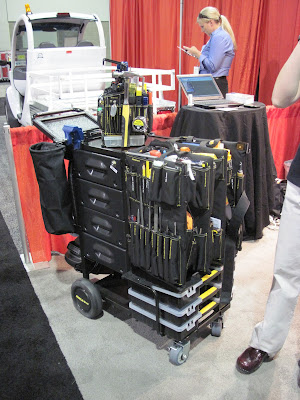We are at a very interesting crossroads, where today’s realities intersect with and influence our ability to achieve our vision for tomorrow. This sort of intersection is not rare, of course, as it happens on an ongoing basis. Every once in a while, however, the constantly shifting nexus undergoes a fundamental or at least notable shift. And that is where I believe we find ourselves now. The economic challenges of the day affect virtually every government, business and family around the globe and each must independently decide how it will best respond to protect itself and enable its future.
In one sense this seems a bit like watching the never ending dance of cells through a microscope as they circle, collide, combine and divide. What results may be predictable or exciting, depending on the conditions that have been established. As we begin to work our way back to a “new normal” on the back side of the global economic trouble I expect we will agree that we have experiences that fall into both categories. Out of this, however, emerges a few noticeable trends, or in some cases a new emphasis on old patterns.
Economic Constraints Will Continue to Shape FM
As noted above, the financial realities of the day will continue to influence governments and organizations for some years. Said another way, it may not have taken long for us to dig the hole we are in, but it is going to take a while for us to climb out. In this environment not everything is as it seems on the surface and a discerning eye is needed.
We are living in an era of capital ambiguity where interest rates are historically low yet access to money is not the given it once was. That said, many of those who can get it are, taking advantage of low rates to stockpile capital. Not all who do so are using it, however. This may simply be opportunistic behavior, in some cases it may be preparatory to later moves. Intel offers a good case in point, having stockpiled capital to the tune of $20 Billion U.S. For nearly two years Intel sat on its growing reserve before recently announcing a set of acquisitions and large capital projects. In this case, Intel appears to have been taking advantage of the low cost of money while waiting for the market to signal appropriate deployment strategies.[1]
That is the key isn’t it? Hoarding cash (as some companies still appear to be doing) is not a good thing, but doing something wrong with it can be even worse. Prudence suggests waiting for the market to declare need before committing capital to projects and initiatives. Given the consumer-driven nature of many large economies, that serves to complicate the recovery equation. Only time will tell if those still sitting on the sidelines with cash are actually in the game, or if they will be content to sit and count. Those decisions, however, contribute to recovery speed, momentum and force, which in turn have a direct effect on FM.
A key question remains: How will the capital environment affect FM development, technology capitalization, and ability to meet business needs? For those who have resource and opportunity the answer is likely to be positive and possibly even energizing. For those without access to capital, however, the realities of today are a cloud over the visions for tomorrow.
Today, “low cost” is a serious advantage in virtually all respects. Buyers of FM services are on the hunt for value at aggressive price points and this emphasis is driving changes in the supply chain. For several years globalization was feeding a business model that relied on a smaller number of provider alliances which aggregated services under one alliance partner, as opposed to multiple providers and contracts. While this trend has been in place for some time the financial pressures of the day have allowed FM’s to improve the value proposition in these relationships. Maintaining quality in the face of cost and revenue pressures is the daily regimen of these providers. Smart buyers understand the pressure on their suppliers and require ongoing quality audits and performance benchmarking.
This is the first installment of a multi-part post covering FM trends.





















